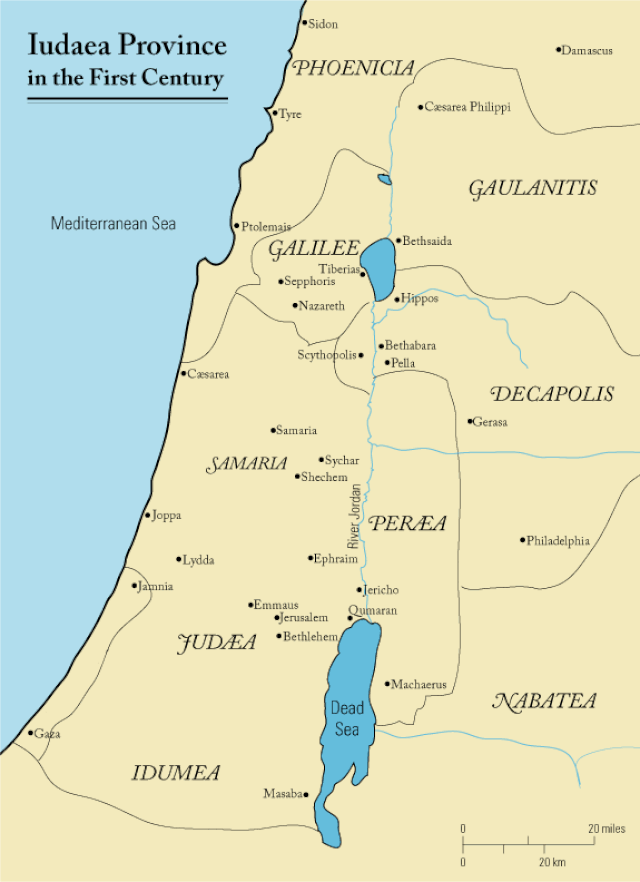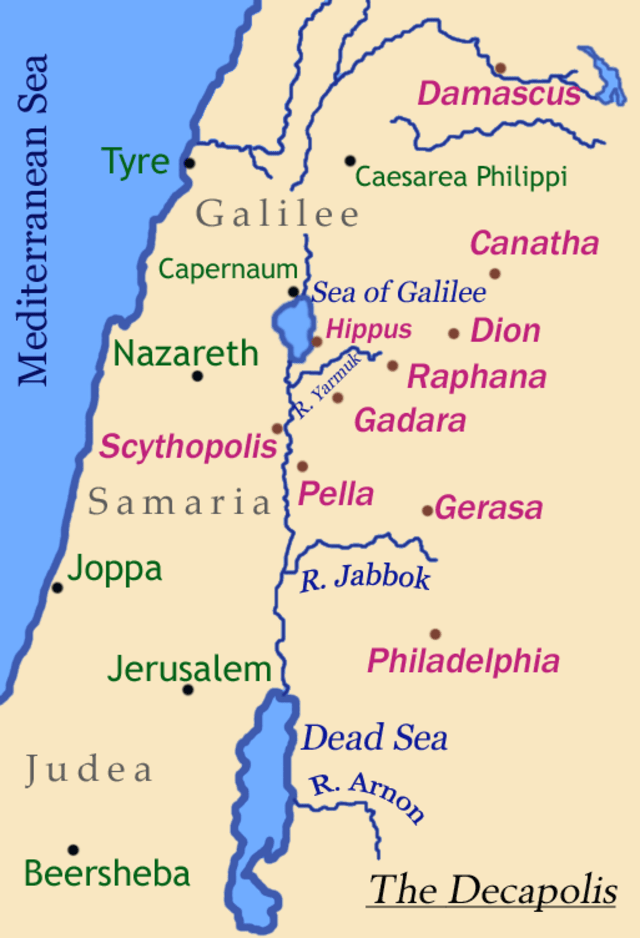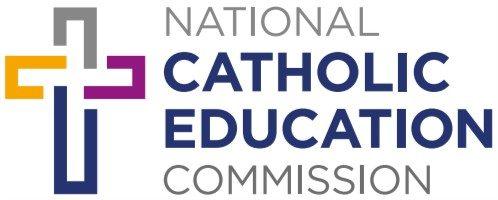They came to the other side of the sea, to the country of the Gerasenes. 2 And when he had stepped out of the boat, immediately a man out of the tombs with an unclean spirit met him. 3 He lived among the tombs; and no one could restrain him any more, even with a chain; 4 for he had often been restrained with shackles and chains, but the chains he wrenched apart, and the shackles he broke in pieces; and no one had the strength to subdue him. 5 Night and day among the tombs and on the mountains he was always howling and bruising himself with stones. 6 When he saw Jesus from a distance, he ran and bowed down before him; 7 and he shouted at the top of his voice, “What have you to do with me, Jesus, Son of the Most High God? I adjure you by God, do not torment me.” 8 For he had said to him, “Come out of the man, you unclean spirit!” 9 Then Jesus asked him, “What is your name?” He replied, “My name is Legion; for we are many.” 10 He begged him earnestly not to send them out of the country. 11 Now there on the hillside a great herd of swine was feeding; 12 and the unclean spirits begged him, “Send us into the swine; let us enter them.” 13 So he gave them permission. And the unclean spirits came out and entered the swine; and the herd, numbering about two thousand, rushed down the steep bank into the sea, and were drowned in the sea.
14 The swineherds ran off and told it in the city and in the country. Then people came to see what it was that had happened. 15 They came to Jesus and saw the demoniac sitting there, clothed and in his right mind, the very man who had had the legion; and they were afraid. 16 Those who had seen what had happened to the demoniac and to the swine reported it. 17 Then they began to beg Jesus to leave their neighborhood. 18 As he was getting into the boat, the man who had been possessed by demons begged him that he might be with him. 19 But Jesus refused, and said to him, “Go home to your friends, and tell them how much the Lord has done for you, and what mercy he has shown you.” 20 And he went away and began to proclaim in the Decapolis how much Jesus had done for him; and everyone was amazed.
New Revised Standard Version Bible: Catholic Edition, copyright © 1989, 1993 the Division of Christian Education of the National Council of the Churches of Christ in the United States of America. Used by permission. All rights reserved.
What to do with this educator’s commentary
This commentary invites you as a teacher to engage with and interpret the passage. Allow the text to speak first. The commentary suggests that you ask yourself various questions that will aid your interpretation. They will help you answer for yourself the question in the last words of the text: ‘what does this mean?’
This educator’s commentary is not a ‘finished package’. It is for your engagement with the text. You then go on to plan how you enable your students to work with the text.
Both you and your students are the agents of interpretation. The ‘Worlds of the Text’ offer a structure, a conversation between the worlds of the author and the setting of the text; the world of the text; and the world of reader. In your personal reflection and in your teaching all three worlds should be integrated as they rely on each other.
In your teaching you are encouraged to ask your students to engage with the text in a dialogical way, to explore and interpret it, to share their own interpretation and to listen to that of others before they engage with the way the text might relate to a topic or unit of work being studied.
Structure of the commentary:
See the general introduction to Mark.
Text & textual features
Characters & setting
Ideas / phrases / concepts
Questions for the teacher
The world in front of the text
Questions for the teacher
Meaning for today / challenges
Church interpretations & usage
The World Behind the Text
See general introduction to Mark.
The world of the text
Text & textual features
This is a miracle story and in particular, an exorcism, which is a type of healing story. Miracles are structured as narratives: in which the illness is the problem to be overcome. issue. In their original context the miracles attributed to Jesus would have established his identity. They singled him out as one through whom ‘the unexpected’ could occur. While miracle accounts still have this role in the Gospels, to limit them to this is to miss a great deal of what they can still say at a richer, symbolic, level.
The factual details of a miracle story are, therefore, not as important as the deeper significance of each miracle story, which needs to be explored.
Daniel Harrington, Jesus: A Historical Portrait. (Cincinnati, Ohio: Franciscan Media, 2007), 43.
For the church, convinced of the divine nature of Jesus by the resurrection, the miracles Jesus undertakes serve as signs of the power of the impending Kingdom of God.
Jesus’ self-proclaimed mission was to initiate the Kingdom of God. In doing so, he would free from their burdens all those who came his way. This story is the second major exorcism in Mark’s Gospel. The first exorcism in Mark (1:21-28) occurs within a Jewish context – inside a synagogue. This second exorcism occurs in Gentile territory on the ‘other side of the Sea’: the Sea of course, being Lake Galilee. Together these two exorcisms demonstrate the open nature of the kingdom: Jesus’ invitation to discipleship and the kingdom of God was for all.
In the previous chapter, Jesus has taught about the Kingdom of God through the use of parables (4:1-34). Now this explanation will change to modelling of the action of the kingdom, especially to people held captive through illness and possession.
This story occurs in four acts. They are:
a) identification of the Possessed Man (v.1-10)
b) the Swineherd (v.11-13)
c) the reaction of the Populace (14-17) and
d) the mission (v:18-20).
Act 1: The Possessed Man.
The possessed man is violent and he engages in self-destructive behaviour, “bruising himself with stones” (v.5). He is socially isolated (v.3) by his ‘possession’ which people have tried to subdue with shackles and chains. He is stripped of his clothing and his dignity, demonstrated by the self-hate symbolised in the harm he is said to have inflicted on himself.
In spite of his state, the man recognises Jesus as one who can help him, and so rushes up to him wanting to be healed.
Act 2: The Swine
The unclean spirits which have possessed the man recognize Jesus and acknowledge his superior power in a short section of dialogue. Negotiating their own exit, they are ‘given permission’ to enter a herd of swine (pigs).
Scholars express some concerns regarding this part of the narrative. We should not focus on the literal movement of unclean spirits from a human into a pig, instead we are invited to consider what Mark is trying to say.
Whatever has held this man captive to his destruction has realised the greater power for good found in Jesus. In Jesus the power of a God who does not avoid evil but rather goes to those trapped by it, to liberate them. Seen in the profound change in the man as a result of his encounter with Jesus, this passage reminds us all of the fullness of life to which we are all called as the children of God.
Peace and serenity are restored; chains and shackles will no longer be required to contain this man; the power of God’s love, brought in Jesus, will hold him. The violence the unclean spirit has wrecked upon this man stands is over.
Act 3: Reaction of the Populace
Apparently informed by the swineherd, the citizens in the neighbouring towns heard the story of Jesus and came to see for themselves. The man that could previously not be restrained with chains and shackles is now composed and sitting at peace. Both the man’s humanity and dignity have been restored.
However, in restoring peace to the broken man, Jesus has disturbed the peace of the locals. Feeling challenged they want to be rid of Jesus. Living within their own ‘tombs’ they assume that this work could only have been done by someone other than human. Jesus must go.
Act 4: The Mission
The story concludes with the previously possessed man wanting to stay with Jesus. However, Jesus sends him in a different direction. While the inhabitants of the region want Jesus to leave, he does not withhold his compassion from them. The man, who was once an outcast and rejected by this community, is entrusted by Jesus to help this same people. The healed man is commissioned to be a messenger of God’s mercy to the gentile community. He is to proclaim his story as to how he has been shown great mercy and transformed through his encounter with the Lord. Through the power of the kingdom of God, the broken man has been liberated from captivity.
Language
The author of Mark’s Gospel uses dramatic language and vivid descriptions. The description of the possessed man is indicative of this – restrained with shackles and chains (v.4), chains he wrenched apart, and the shackles he broke in pieces (v.4), howling and bruising himself (v.5). It is mentioned three times that the possessed man lived among the tombs, (v. 2, 3, 5). These descriptions create a detailed mental picture which draws the reader into the story.
Ideas/phrases/concepts
Unclean Spirit:
At the time of writing this story, there was a popular belief in demons. Someone described as having an unclean spirit was believed to be possessed by a demon/s. It was believed that demons inhabited waste land such as a desert or a cemetery (v2). Psychological illness was believed to be the visible sign of demonic possession.
Gerasene Demoniac:
He is described as living among the graves and in the hills. This man who was broken engaged in self-destructive behaviour. He was socially isolated and separated from his community. The local community had tried to restrain him with shackles and chains in order to keep him away from the community as he was considered a threat to others.
Swine:
Pigs were regarded as unclean by the Jews.
Town folk:
On witnessing the previously possessed man, the town folk were afraid. The man who they could not control was now sitting peacefully with Jesus.
Setting
This story is also recorded in the Gospels of Matthew and Luke. While they all agree that this story occurs in the non-Jewish territory called the Decapolis (see Map 1), they do not agree on the specific location within the region. Both Mark (5:1) and Luke (8:26) has this story set in the country of the Gerasene’s and the city of Gerasa is about 40 miles south-east of the Sea of Galilee. Matthew has the same story set in the country of the Gadarenes (Mt 8:28) which is about 6 miles south-east of the Sea of Galilee (see Map 2). A third option that has been proposed for this setting is Gergesene which is the region on the east bank of the Sea of Galilee. While this detail is of interest in comparative analysis, it should not be allowed to deny the truths the passage contains: do not let create a ‘which one is correct’ impasse for students.


Terms
Decapolis:
The Decapolis was a group of ten city states that were established on the south-eastern side of the Sea of Galilee (see Map 1). They were Hellenised (i.e. Greek in form and character) cities that were mostly populated by veterans of the Roman army. However, there were pockets of Jewish settlers in these cities.
Jesus’ mission for Christians today is
“to spread the good news of liberation in our time and place.”
Brendan Byrne, A Costly Freedom: A Theological Reading of Mark’s Gospel, Australian ed.(Strathfield, NSW: St Pauls Publications, 2008), 99.
The Gerasene demoniac lived a life among the dead, isolated from family, home and community. Similarly, individuals, communities and nations can also experience isolation and/or engage in self destructive behaviour just as the Gerasene demoniac experienced when living in the cemetery.
In today’s world, this isolation can be caused by various ‘demons’ such things as poor health, domestic violence, mental health issues, disconnection from family, unemployment, disabilities or even age. Social isolation and exclusion can also lead to people engaging in self-destructive behaviours such as alcohol or drug abuse, self-harm, eating disorders, compulsive behaviours and even suicide. They are, for different reasons, prevented from living fully in community. However, when we stop to reflect upon our own lives, we all have something that we need deliverance from in order to live life in all its fullness.
However, individuals, communities and nations can also be the cause of oppression of both the living and/or non-living creation just as the local community was a cause of oppression for the possessed man. Refugees and asylum seekers can feel isolated when they are locked away in detention centres and denied their full rights. First nations people feel oppressed as they are outcasts from their own land and they are excluded from living fully in community due to incarceration, lack of employment opportunities, limited education, poor health, housing and sanitation. Other members of community feel oppressed when they are subjected to racism, ageism, sexism and other ‘isms’ of the modern world. Nations oppress the land, air and waterways through the selfish use, neglect and destruction of these natural resources.
As this story illustrates, nothing can separate us from the healing word of God which comes to us through Jesus Christ.
Fallon, The Gospel According to Mark, 112.
Like the broken man in this story, we are all made in the image of God. Through his engagement with Jesus, the possessed man was liberated from his demons. When we are liberated from our demons, we too can find peace and tranquillity just as the Gerasene demoniac did in this story.
Questions for the teacher:
The world in front of the text
Questions for the teacher:
Please reflect on these questions before reading this section and then use the material below to enrich your responsiveness to the text.
Meaning for today/challenges
Jesus’ mission for Christians today is “to spread the good news of liberation in our time and place.” The Gerasene demoniac lived a life among the dead, isolated from family, home and community. Possessed by something unclean, his behaviour was self destructive and harmful. Similarly, individuals, communities and nations can also experience isolation and/or engage in self destructive behaviour.
In today’s world, this isolation can be caused by various ‘demons’ such as poor health, domestic violence, mental health issues, disconnection from family, unemployment, disabilities or even age. Social isolation and exclusion can also lead people to engage in self-destructive behaviours such as alcohol or drug abuse, self-harm, eating disorders, compulsive behaviours and even suicide. They are, for different reasons, prevented from living fully in community, instead inhabiting there own tombs…places of death, grief and sadness. When we stop to reflect, then, upon our own lives, we all have something that we need deliverance from in order to live life in all its fullness.
Further reflection can also come from consideration of how individuals, communities and nations can be the unclean spirits that cause oppression of both the living and/or non-living creation. We do not know what possessed this man but whatever it was it prevented him from the full flourishing of a child of God. Could we, individually and collectively, be the unclean spirit for some? For example, refugees and asylum seekers, ‘chained and shackled’ in detention centres; first nations people, outcasts in their own land and excluded from living fully in community due to incarceration, lack of employment opportunities, limited education, and poor health, housing and sanitation. Do our views on race, age, gender, etc possess those around us? Does our possession allow us to feel that we own the earth and her natural resources.
As this passage illustrates, nothing can separate us from the healing word of God which comes to us through Jesus Christ. Through his engagement with Jesus, the possessed man was liberated from all that held him chained and shackled: spirit and human. Released, he found peace and tranquillity in the gracious love of God in Jesus.
Liturgical Usage
While the Sunday readings are arranged in a three-year cycle, the weekday readings are organised into a two-year cycle – Cycle 1 & 2. This miracle story is not included in the Sunday cycle of readings, it is the Gospel reading on the Monday of Week 4 of Ordinary Time in both cycles.
